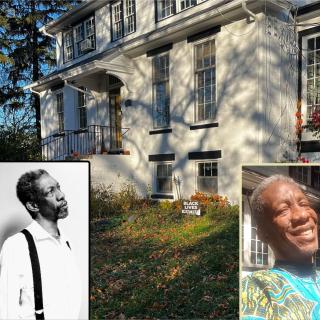This article first appeared on Reel Time with Richard Ades.
As a documentary about a woman who deals with trauma with the help of exercise, Jeannette reminds me of a movie I wanted to make years ago. The main difference is that my film never got made, probably because I didn’t know how to create a space in which the woman in question felt safe enough to tell her story.
Director Maris Curran, obviously, does know how. She partly accomplishes this by avoiding the kind of probing interviews one generally sees in documentaries. Instead, she allows her subject to simply live her life in front of the camera.
Curran’s subject is Jeannette Feliciano, a survivor of 2016’s horrific mass shooting at Pulse, a gay nightclub in Orlando, Florida.
Besides being a survivor, Jeannette is also a lesbian, a single mom, a Latina, a personal trainer and a competitive bodybuilder. All of these facets of her life are represented in the documentary’s one hour and 18 minutes, though some are given more space than others.
For example, we see a lot of Jeannette’s nurturing relationship with her son, Anthony, but little of her relationship with girlfriend Yaris. Presumably, that’s because Jeannette isn’t comfortable revealing that part of her life to strangers.
One thing Jeannette is not shy about revealing is the extent to which her near-death experience has continued to haunt her. When she’s in public, she admits at one point, she can’t help imagining what she would do if a similar incident were to arise.
It’s not surprising, as the Pulse shooting was a tragedy of immense proportions. Entering the club during “last call” on that fateful night, a single gunman was able to kill 49 people and wound 53 more.
Jeannette was an up-and-coming competitive bodybuilder prior to the 2016 shooting at an Orlando nightclub.
Even so, as the film demonstrates, Jeannette has fought back against fear and the kind of spiritual paralysis her ordeal could have created. This comes out most clearly in an early scene, when she invites fellow survivors to her local gym for a workout session aimed at strengthening their psyches as well as their bodies.
The doc’s slice-of-life style is well served by cinematographer Jerry Henry’s sensitive images. Nevertheless, its limitations are sometimes evident.
When a handgun-toting Jeannette visits a shooting range to take aim at a paper target, there’s no explanation of how she came to be there. Has she always been a gun owner, or did she become one in response to her traumatic experience?
Given the U.S.’s endless debate over guns, gun control and gun violence, it’s an interesting question, but it’s one the film never brings up.
Likewise, when Jeannette visits Puerto Rico to help out family members dealing with the devastation left by 2017’s Hurricane Maria, the documentary keeps the focus solely on her heroic efforts. It ignores the storm’s political fallout, including the Trump administration’s delayed relief efforts.
As the film goes on, it deals more and more with Jeannette’s attempt to return to the competitive bodybuilding she set aside following the Pulse attack. It all leads to a major contest at which she and other jacked-up women strike poses before an admiring crowd.
Jeannette shares a hug with her teenage son, Anthony.
If Curran had stopped the film there, it would have provided an ending worthy of a Hollywood sports drama. Interestingly, though, she instead follows Jeannette and Anthony to a bowling alley, where they enjoy a little mother-son rivalry.
The modest scene completes the doc’s depiction of Jeannette’s attempt to move beyond the trauma left over from the Pulse shooting. We understand that every attempt she makes to live a normal life—whether she’s trying to get back into competitive bodybuilding or simply going bowling with her son—is a way of fighting back.
If Curran’s film has a message, that’s it.
Rating: 3½ stars (out of 5)
Jeannette will be available through major VOD outlets beginning June 17.





